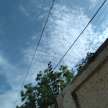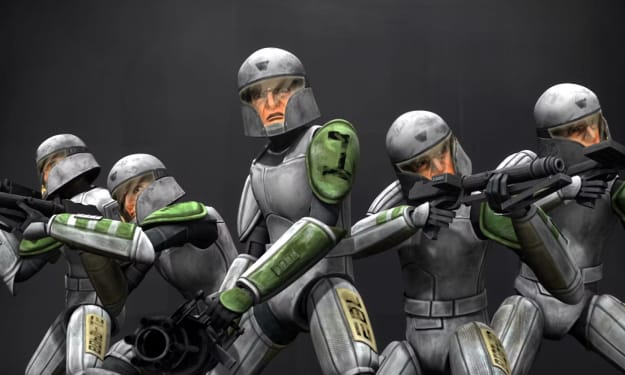How BBC makes Planet Earth looks like a Hollywood Movie?
Transforming Planet Earth: The BBC's Hollywood-Style Magic

Those images of a swarm of locusts come from the BBC's seminal Planet Earth series in 2006. You may notice that the resolution has been upgraded from HD. Ultra HD. . But the other big change is that planet Earth 2 isn't all about grasshoppers. The cameras are also moving. These dynamic tracking shots are part of the reason why Planet Earth 2 is the BBC's most cinematic nature film to date. GUNTON: We know that when we go to the movies now, the camera is never still. It's always moving, it's always on steadicam, it's always on the road, it's always flying. And I think we wanted to reflect that in our approach.
Not just because we wanted to give credit to the film, but because the film does that, because as soon as you feel the camera moving, it feels more immersive, it feels more connected. Watching Planet Earth 2 feels like watching a Hollywood blockbuster. You almost forget that these actors are hiding in the far corners of the globe and are not following scripts. The BBC Natural History Unit in Bristol has been making nature films for 60 years.
Their frequent presenter, Sir David Attenborough, is the most recognizable voice in the genre. "This extraordinary creature is half-blind, half-deaf, and it's only as fast as it can move." And over the decades, they have consistently raised the bar for the look of nature films as well. This development, as we explore in this three-part series, is largely a story about technology. The first major breakthrough was the lightweight 16mm film cameras. THE NIGHTINGALE: If you remember, television began as a studio operation. It just had huge video cameras that were bigger than a man. Then, of course, in the film industry, it was all films, and again, they were very, very difficult.
There were simply no cameras that could be taken into jungles and deserts etc. 16mm cameras were portable but were controversial at the BBC and were considered amateur cameras as 35mm film was the distribution standard at the time. But Attenborough insisted on smaller cameras on his first trips abroad. And sure enough, he came back with animals never before described, like these Madagascar lemurs. Fifty-six years later, filming the Indris means moving the camera around them and traveling with them through the trees, but the technology they used to do this has only been introduced in recent years. The problem is stabilization. You can see the tremors in these rare handheld images from the 1990 BBC series The Trials of Life.
Aerial photography had the same problem. And when they tried to zoom in, those bumps just got bigger. The producers were able to achieve cinematic movement with cranes, puppets and skates when practical. But for decades, almost all images that weren't underwater involved a camera tripod—panning, tilting, and zooming to follow the action. There is certainly no shortage of incredible animal behavior that can be depicted in this way. But that all changed around 2002. That was when the BBC switched from film to digital HD cameras for the Planet Earth series.
This switch gave them access to a tool called a Cineflex sound gimbal, which is a camera stabilization system mounted on a helicopter. The sound gimbal provided smooth and expansive landscapes that defined the epic look of the series. But it also allows them to photograph individual animals a kilometer from the sky and zoom in to observe them without being frightened by the noise of a helicopter. And that changed the way they could record behaviors like hunting. GUNTON: When you look at the way people shot and edited the hunting sequences, because of the nature of the camera placement, you never get long sequences because if you shoot on a tripod, the wolf would run away. , had to jump up and jump into the rover on the ground, run across, stand up and another shot. So it always had to be quite edited and well structured. Compare that to hunting wolves on planet Earth. GUNTON:
When that wolf started hunting, you could just fly along, keep your distance, and with one shot you could see the drama unfold. And you just don't know what's going to happen: will it trip, will it catch, will the little caribou run away, will it trip? It was so addictive because it was immediate. The Cineflex system required digital cameras because it separates the lens from the camera's data storage, which at the time was digital video. You just can't do that with film.
The 400mm zoom lens is mounted in rings called gimbals that isolate it from the movement of the helicopter using small sensors called gyroscopes. These sensors detect changes in direction so that the motors can correct these movements almost immediately. So the camera operator can control the lens with a joystick inside the helicopter and zoom without losing stability. Ten years later, this stabilization technology is available in smaller, much more affordable forms. It's embedded in drones and embedded hardware that you can hold in your hand. And this technological change was perfectly suited to what the BBC wanted to do with Planet Earth 2.
GUNTON: We wanted to create intimacy and get closer to the animals because we wanted to see the world, the landscapes of our planet, through the eyes of animals. . Gyro-stabilized drones offered more intimate aerials, and hand-held images showed what it's like to actually navigate these habitats. WHITE: I think we used a much more emotional story in them. It tries to bring you much more into their world
Like what you read? Consider liking and subscribing for more! :)






Comments
There are no comments for this story
Be the first to respond and start the conversation.